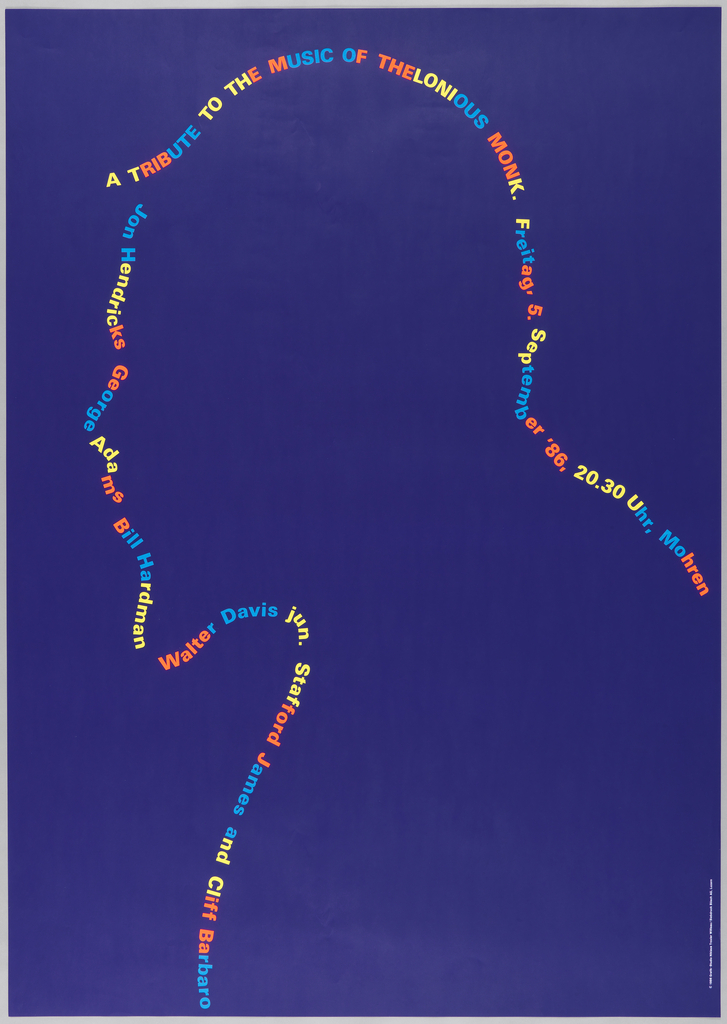This poster, for a tribute concert to the music of Thelonious Monk at the Jazz Festival Willisau, can be categorized a few ways. It’s one of the 17 posters we have by Swiss graphic designer Niklaus Troxler (a Willisau native and jazz lover who first organized the jazz festival in 1975). It’s also one of the 323 offset lithographs on paper we have available online (and that’s not counting the 84 more offset lithographs on wove paper).
Most interestingly, it’s one of the 13 blue concert posters in our collection. That number isn’t an exact count, but it’s the best we can figure based on the data we keep for objects in our museum’s database. We don’t explicitly store the color or purpose of an object the same way we store its medium or makers, so queries involving those parameters need to be inferred from all the texts and images we have available.
If you had gone to our collections website a month ago and searched for blue concert posters, you would have seen that we didn’t have any — not because that’s the case, but because our website’s search engine was unable to find them. We’ve been using our current collections database since 1998, long before we introduced our collections website, and much of the data we have stored in it was never intended to be searched on. Going back to clean up or expand object data en masse isn’t always practical, so we rely on search tools to pull together all the sorts of varied data we do store and return accurate results for a given query. We recently rebuilt the way search works on both the frontend and the backend of our collections website, and in the process applied some techniques that allow for more general queries to be understood by the engine. As a result, we were able to return accurate results for many queries that previously turned up nothing. You can read about the technical details of that process on our Labs blog.
So how exactly do we know that Troxler’s poster is a good match for “blue concert poster”? We know it’s a poster because that’s explicitly stated in the object’s “type” field. We don’t specifically know that it’s a concert poster, but it becomes a potential match for that search term because the object’s justification (an explanation of why we’ve collected an object) notes that “[Troxler] organized his first jazz concert when he was 19.” This is the only mention of the word “concert” in any text having to do with the poster, but it’s enough to make the object relevant for the query. Finally, we know it’s blue because we’ve run the object’s image through color-analysis software that identified “midnight blue” as a color match. Combined, those three term matches tell the search engine to pick this object over the hundreds-of-thousands of others to present as a valid match to users.
Search engines allow us to help both those website visitors who know exactly what they’re looking for and those who have no clue what they’re looking for. Have something in mind or just want to browse? Head on over to our search page now and see what you can dig up!
Sam Brenner is an Interactive Media Developer in the Digital and Emerging Media department at Cooper Hewitt, Smithsonian Design Museum.
